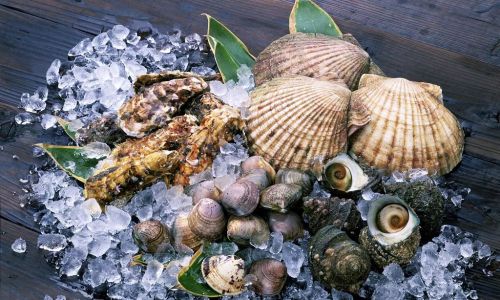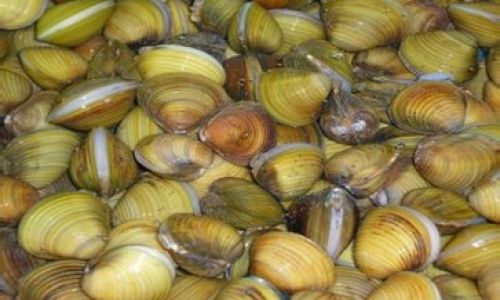Table of content
Seafood has been a cornerstone of human diets for millennia, offering a rich tapestry of flavors, textures, and nutritional benefits. From the depths of the ocean to coastal dining tables, the diversity of seafood is staggering, with each variety boasting unique characteristics and culinary applications. This article delves into the most common types of seafood, exploring their biological classifications, culinary uses, and global popularity. Whether you’re a seasoned chef, a casual home cook, or simply a seafood enthusiast, understanding these varieties can elevate your appreciation for marine cuisine.
Fish: The Backbone of Seafood Consumption
Fish constitute the largest and most diverse group of seafood, with thousands of species harvested globally. They are broadly categorized into two groups: finfish (bony fish with fins) and shellfish (which include crustaceans and mollusks). Below are some of the most ubiquitous finfish varieties:
1 Salmon
Salmon is arguably one of the most recognizable and beloved fish species. Native to the cold waters of the North Atlantic and Pacific oceans, salmon is prized for its rich, fatty flesh, which ranges in color from pale pink to deep orange. The most common species include Atlantic salmon (farmed and wild) and Pacific salmon varieties like sockeye, coho, and chinook.
Culinary Uses: Salmon’s versatility shines in dishes like sushi, smoked salmon, grilled fillets, and cured gravlax. Its high omega-3 fatty acid content makes it a nutritional powerhouse, linked to heart and brain health.
Fun Fact: Salmon are anadromous, meaning they migrate from freshwater to the ocean and back to spawn. This life cycle influences their flavor, with wild-caught salmon often having a more pronounced taste due to their varied diet.

2 Tuna
Tuna is a staple in sushi bars and pantries alike, known for its meaty texture and mild flavor. Species like skipjack, albacore, yellowfin, and bluefin dominate global markets. Bluefin tuna, particularly prized for sushi, is notorious for its high price tag and overfishing concerns.
Culinary Uses: Tuna is canned (e.g., “chunk light” from skipjack), seared as steaks, or sliced raw in sashimi. Its lean, firm flesh holds up well to grilling and marinating.
Nutritional Profile: Tuna is rich in protein, vitamin D, and selenium, though mercury levels in larger species like bluefin necessitate moderate consumption.
3 Cod
Cod is a cold-water fish with delicate, flaky white flesh. Atlantic cod and Pacific cod are the primary commercial species, though overfishing has led to stricter regulations in some regions.
Culinary Uses: Cod is a cornerstone of dishes like fish and chips, baked cod with herbs, and cod cakes. Its mild flavor makes it ideal for absorbing sauces and spices.
Historical Significance: Cod played a pivotal role in European exploration and trade, with Newfoundland’s Grand Banks once sustaining massive cod fisheries.
4 Shrimp
While technically a crustacean, shrimp often falls under the “fish” category in culinary contexts. These small, sweet-tasting crustaceans are the most consumed seafood globally, with species like whiteleg shrimp, tiger shrimp, and pink shrimp dominating markets.
Culinary Uses: Shrimp is grilled, fried, sautéed, or added to soups, pasta, and salads. Their quick cooking time and adaptability make them a pantry staple.
Sustainability Concerns: Shrimp farming, particularly in Southeast Asia, has faced criticism for environmental impacts, though certified sustainable options are increasingly available.
Crustaceans: Claws, Tails, and Delicate Flavors
Crustaceans include animals with exoskeletons and segmented bodies, such as crabs, lobsters, and shrimp. Their meat is often sweet, tender, and highly prized.

1 Crab
Crab species vary widely, from the snow crab of Alaskan waters to the blue crab of the Chesapeake Bay. Dungeness crab and king crab are other popular varieties.
Culinary Uses: Crab meat is enjoyed steamed, in crab cakes, bisques, or as a luxurious topping for salads and pasta. The sweet, briny flavor of crab pairs well with butter and citrus.
Harvesting Challenges: Crab fishing is labor-intensive and seasonal, contributing to its premium pricing.
2 Lobster
Lobster, once considered a “poor man’s food,” is now a symbol of luxury. The American lobster and spiny lobster (without claws) are the primary commercial species.
Culinary Uses: Lobster is boiled, steamed, grilled, or used in bisques and thermidor. Its rich, buttery meat is often paired with drawn butter or lemon.
Cultural Impact: Lobster’s rise to culinary stardom began in the 19th century, with railroad companies marketing it as a delicacy to passengers.
Mollusks: Shellfish with a Side of Sophistication
Mollusks encompass bivalves (clams, oysters, mussels), gastropods (snails), and cephalopods (squid, octopus). Their diverse forms and flavors make them a chef’s delight.
1 Clams
Clams are bivalves found in both freshwater and saltwater. Common varieties include hard-shell clams (quahogs), soft-shell clams (steamers), and razor clams.
Culinary Uses: Clams are steamed, baked, added to chowders, or enjoyed raw on the half-shell. Their briny juice, or “liquor,” is a prized ingredient in sauces.
Cultural Traditions: Clam bakes, a New England tradition, involve steaming clams with corn and potatoes in a pit.

2 Oysters
Oysters are bivalves celebrated for their complex, terroir-driven flavors. Species like Pacific oysters and Eastern oysters vary in taste based on their growing waters.
Culinary Uses: Oysters are eaten raw on the half-shell, grilled, fried, or used in stews. They pair exceptionally well with Champagne or mignonette sauce.
Environmental Role: Oysters are ecosystem engineers, filtering water and providing habitat for marine life.
3 Squid and Octopus
Squid and octopus are cephalopods with tender yet chewy meat when cooked properly.
Culinary Uses: Squid is grilled, fried (calamari), or added to pasta. Octopus is often braised, grilled, or served in salads like the Greek htapodi salata.
Cooking Tip: Overcooking cephalopods results in rubberiness; simmering or marinating helps tenderize their flesh.
Lesser-Known but Widely Consumed Seafood
Beyond the classics, several seafood varieties deserve recognition for their global appeal.
1 Tilapia
Tilapia is a freshwater fish native to Africa but now farmed worldwide. Its mild, white flesh and affordability have made it a fast-food favorite.
Culinary Uses: Tilapia is baked, fried, or used in tacos. Its neutral flavor adapts to various seasonings.
Controversy: Farmed tilapia has faced scrutiny over farming practices, though sustainably raised options exist.

2 Catfish
Catfish, particularly the channel catfish, is a staple in Southern U.S. cuisine. Its moist, slightly sweet flesh lends itself to frying, grilling, or blackening.
Culinary Tradition: Catfish farms in the Mississippi Delta supply much of the U.S. market, with “catfish fridays” being a regional tradition.
3 Sardines and Anchovies
These small, oily fish are packed with flavor and nutrients. Sardines are often canned, while anchovies are salt-cured and used as a pungent flavor enhancer.
Culinary Uses: Sardines are grilled, pan-fried, or added to salads. Anchovies melt into sauces like puttanesca or elevate Caesar salads.
Health Benefits: Both are rich in omega-3s and vitamin D, though their strong taste limits their appeal.
Sustainability and Ethical Considerations
The seafood industry faces growing pressure to address overfishing, habitat destruction, and bycatch. Certifications like the Marine Stewardship Council (MSC) label help consumers identify sustainable choices. Opting for locally sourced, seasonal seafood and diversifying diets to include underutilized species can reduce environmental impact.
Conclusion
The world of seafood is a testament to marine biodiversity and human ingenuity. From the humble clam to the regal lobster, each variety offers a unique culinary experience and a window into ecosystems that sustain life on Earth. By exploring these common types of seafood, we not only expand our palates but also gain a deeper appreciation for the oceans that nourish us. Whether you’re savoring a plate of sushi, slurping oysters, or frying catfish, remember that every bite connects you to a vast, watery world—and the responsibility to protect it.




0 comments